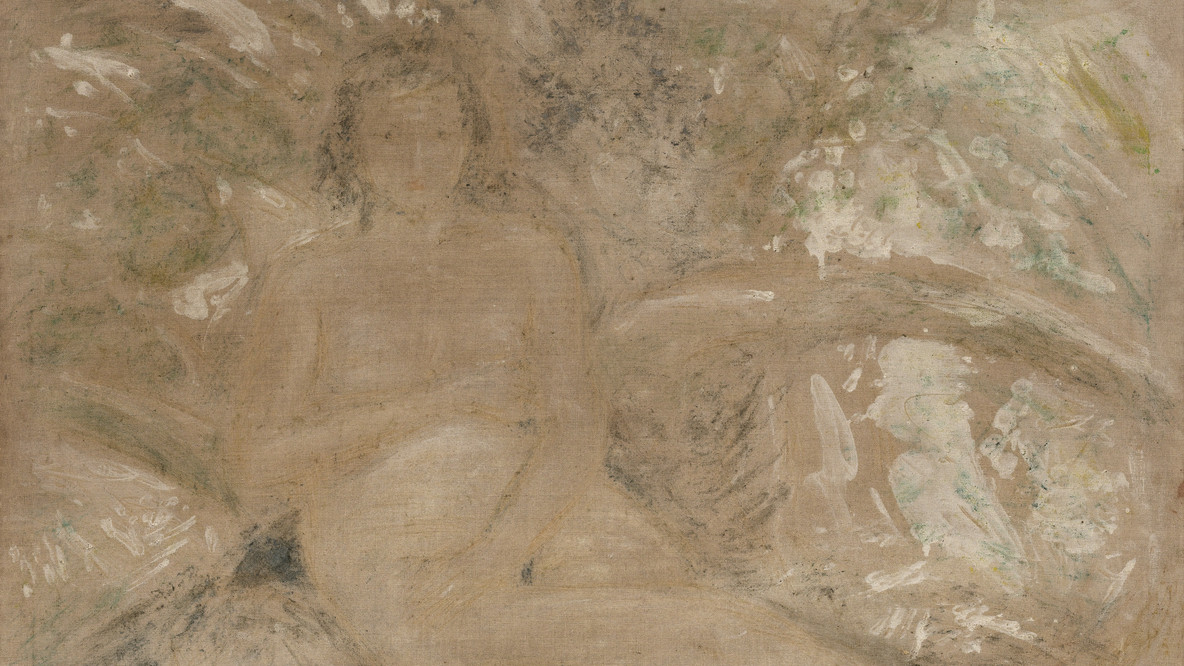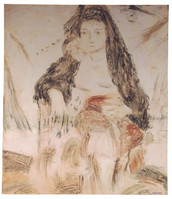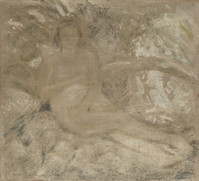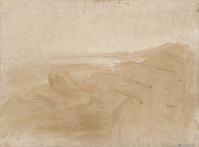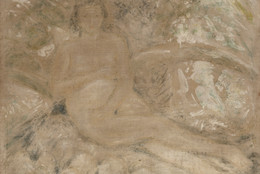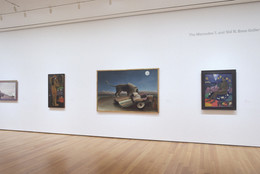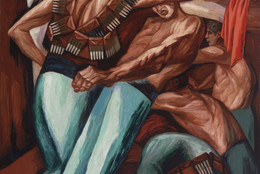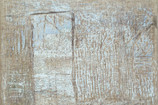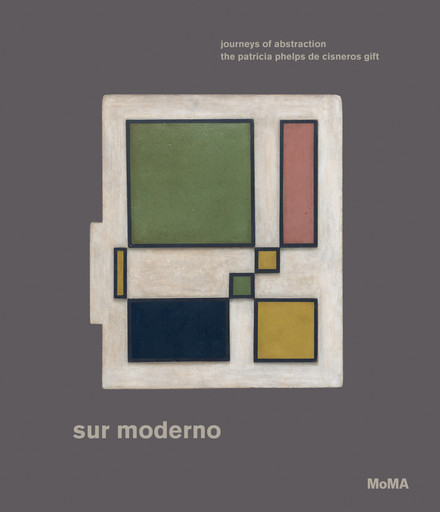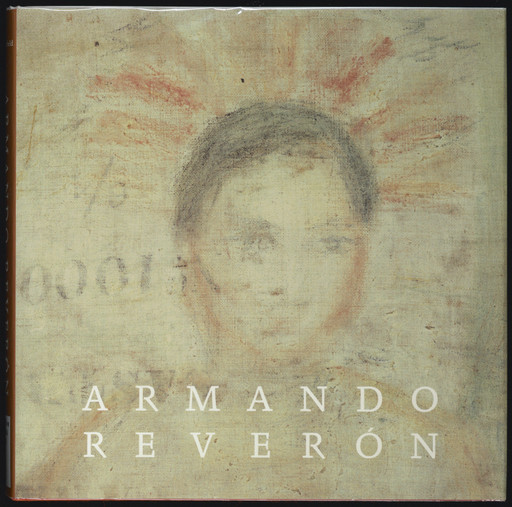How can one speak of Armando Reverón without bringing up the light of Venezuela’s Caribbean coast? Blinding and all-encompassing, it bathes the fishing village of Macuto, where the artist established his household in the early 1920s. Macuto was, in the artist’s words, “a world of light, incredible vegetation, and sea, where nobody would bother me by asking, ‘Armando, why do you paint like this?’” Here, the artist created paintings of almost imperceptible figures, bodies and landscapes so ethereal that they seem to dissolve in Macuto’s radiant light.
A Caracas native, Reverón frequently felt discontented with the capital city. After studying at the local fine arts school, he traveled to Spain to take classes in Barcelona and Madrid, where he immersed himself in the works of painters such as Francisco de Goya and Ignacio Zuloaga. Back in Caracas, in 1915, he joined the Circle of Fine Arts, finding like-minded artists who, inspired by European Post-Impressionism, sought to explore plein-air techniques. By 1919, Reverón had started frequenting La Guaira (Venezuela’s principal port on the Caribbean) and the nearby Macuto. There, he met Juanita Mota, his lifelong partner, and together they built a house-studio known as the Castillete (Little Castle).
Much like his makeshift studio, Reverón crafted his painting materials. He used burlap with distinctively coarse weaves, often obtained from fishermen, as his canvases. Reverón’s style mirrored the unadorned, rough ambiance of his studio. Consider his depictions of nude women, reminiscent of Goya’s Majas series. In Reverón’s gouache Maja (c. 1933), only a few swift brushstrokes in ochre, red, and black define a woman’s face, arms, and hair. And in Mujer del río (Woman of the River, 1939), only white and dark pigments sparingly suggest the character’s abdomen and hair. Both works feature characters whose skin tones seamlessly merge with the surrounding spaces, suggesting a blending of light and form. “Light dissolves colors,” Reverón noted, “and in the end, all colors become white.”
In Paisaje blanco (White Landscape, 1941), the artist takes his exploration of light and faintly discernible forms to the extreme. A diagonal band of white pigment divides the piece in two sections, with the upper one having more pigment. On the lower area, Reverón used the back of a brush to remove pigment and reveal the burlap’s coarse weaves, creating a rough texture reminiscent of earth. This emptier area represents a mountain, while the upper, denser part depicts the sky. Even the white light in this painting seems denser than the figures. Art historians have referred to this work as Latin America’s first monochrome because of how it prioritized experimentation with color and light over the representation of recognizable figures.
Despite residing in Macuto, Reverón maintained far-reaching artistic networks throughout his life. He and Mota frequently welcomed visitors, which led to the production, between 1934 and 1949, of Edgar Anzola’s documentary about him. Reverón also exhibited his work frequently, notably at the 1939 World’s Fair in New York and his 1951 retrospective at Caracas’s Centro Venezolano-Americano. However, his subject matter remained rooted in Macuto. When asked about her late husband, Juanita Mota often focused on their outings to paint the seashore. “Juanita, there is a landscape that is very distant, and we must depart early,” she recalled him saying. “Today, we rose early to capture the sunrise.”
Horacio Ramos, Mellon-Marron Fellow, Cisneros Institute, 2024
Es imposible hablar de Armando Reverón sin mencionar la luz de la costa del Caribe venezolano. Cegadora y omnipresente, baña el pueblo pesquero de Macuto, donde el artista estableció su hogar a principios de los años veinte. En palabras del artista, Macuto era “un mundo de luz, de vegetación increíble, de mar y donde nadie me fastidia preguntándome: ‘¿Armando y por qué pintas así?’” Allí pintó el artista cuadros de figuras casi imperceptibles, cuerpos y paisajes tan etéreos que parecían disolverse en la radiante luz de Macuto.
Aunque nació en Caracas, por lo general Reverón no se sentía cómodo en la capital. Tras estudiar en la escuela local de Bellas Artes, viajó a España a tomar clases en Barcelona y Madrid, donde se familiarizó con las obras de pintores como Francisco de Goya e Ignacio Zuloaga. En 1915, cuando regresó a Caracas, se unió al Círculo de Bellas Artes, donde encontró artistas afines que, inspirados en el postimpresionismo europeo, buscaban explorar las técnicas del plein-air. En 1919, Reverón empezó a frecuentar La Guaira (principal puerto de Venezuela en el Caribe) y el cercano pueblo de Macuto. Allí conoció a Juanita Mota, quien sería su compañera de por vida, y juntos construyeron una casa-estudio conocida como el Castillete.
Al igual que su precario estudio, Reverón fabricó sus propios materiales de pintura. Para sus telas utilizaba sacos de tejido basto, que a menudo obtenía de los pescadores. El estilo de Reverón reflejaba la atmósfera rústica y sin adornos de su estudio. Sus desnudos femeninos recuerdan a la serie de las Majas de Goya. En la gouache de Reverón titulado Maja (c. 1933), apenas unas rápidas pinceladas en ocre, rojo y negro definen el rostro, los brazos y el pelo de una mujer. Y en Mujer del río (1939), unos pigmentos blancos y oscuros esbozan ligeramente el abdomen y el pelo del personaje. Ambas obras presentan figuras cuyos tonos de piel se funden a la perfección con los espacios que las rodean, insinuando así una fusión entre la luz y la forma. “La luz disuelve los colores,” señaló Reverón, “y todos los colores al fin y al cabo llegan a ser blancos”.
En Paisaje blanco (1941), el artista lleva al límite su investigación sobre la luz y las formas apenas perceptibles. Una franja diagonal de pigmento blanco divide la obra en dos secciones. La superior tiene más pigmento. En la parte inferior, Reverón usó el dorso de un pincel para retirar pigmento y dejar al descubierto el tejido basto de la tela, creando una textura áspera que recuerda a tierra. Esta zona más vacía representa una montaña, mientras que la parte superior, más densa, representa el cielo. En el cuadro, la luz blanca parece más densa que las figuras. Los historiadores del arte se refieren a esta obra como el primer monócromo de América Latina por la forma en que el artista priorizó la experimentación con el color y la luz, antes que la representación de figuras discernibles.
Aunque vivía en Macuto, Reverón mantuvo toda la vida una amplia red de contactos en el mundo del arte. Mota y él recibían invitados con frecuencia, lo que impulsó la producción, entre 1934 y 1949, del documental de Edgar Anzola sobre el artista. Reverón también expuso su obra con frecuencia, las muestras más notables fueron en la Feria Mundial de Nueva York de 1939 y en su retrospectiva de 1951 en el Centro Venezolano-Americano de Caracas. Sin embargo, sus temáticas siguieron arraigadas a Macuto. Cuando le preguntaban por su difunto marido, Juanita Mota solía hablar de las salidas que hacían para pintar a la orilla del mar. “Juanita, hay un paisaje que está muy lejos y hay que irnos temprano,” recuerda que le decía. “Hoy nos vamos temprano a pintar los amaneceres”.
Horacio Ramos, becario del Consorcio de Investigación Mellon-Marron, Instituto Cisneros, 2024
